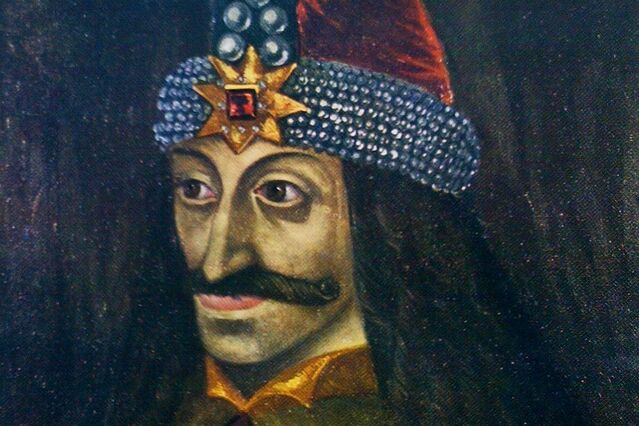Motivation
The Psychological Roots of Gruesome Violence
Why do some aggressive conflicts lead to grisly violence?
Posted March 13, 2021 Reviewed by Devon Frye

Key Points:
- Inflicting unnecessarily gruesome violence on other humans during aggressive conflict could be a way to signal formidability, a recent study finds.
- People who committed gratuitous acts of violence were perceived to be bigger and stronger than those who didn't.
- Since aggression is costly and risky, over-the-top violence could be an evolutionarily-based way to intimidate opponents and avoid future conflicts.
Throughout history, there are many examples of violence that goes beyond simply defeating one’s enemy: heads on pikes, dismemberment, disembowelment. What’s the point of this gruesome form of violence? This was a question that spurred a recent study I conducted with collaborators from UCLA and UC Merced.1
First, let’s go over some basics of aggressive conflict. Nature is a violent place. Most animals must compete for food, mates, status, and other resources. Of course, it’s not always worth it to fight over a resource. Aggression is costly, so animals need to be able to quickly and accurately assess the relative costs and benefits of fighting over a resource. Whether or not you decide to escalate a situation depends on the importance of the resource to you, how much you think it matters to your competitor, and the relative fighting ability of yourself compared to the competitor. Basically: How much do you want it, and what are your chances of winning a fight for it?
How Size and Strength Affect the Chances of Winning
In essentially every species, size is a good predictor of who will win a fight. The bigger dog will beat the smaller dog more times than not. This makes size a really valuable indicator of win success. This isn’t too surprising and probably fits well with most people’s intuitions. It’s why fighting sports like boxing, UFC, and wrestling have weight categories. Pitting a 140-pound man against a 200-pound man is not a fair fight.
It’s not just body mass that matters. Some animals have evolved weaponry such as horns, fangs, and claws that can influence the outcome of a fight. This type of weaponry contributes to “power.” Still, it tends to be the size of these weapons that matters. The animals with bigger horns, bigger fangs, or bigger claws are more likely to win a fight.
In humans, we use measures of certain muscle groups as a proxy for fighting ability. For example, bigger biceps or pectoral muscles might make up for some of the differences in body mass. Two 200-pound men have the same body mass, but they could very likely differ in power.
Understanding Aggressiveness and Motivation
In addition to body size and power, aggressiveness and resource value influence the outcome of a violent altercation. More aggressive individuals are more likely to escalate a fight more quickly. Likewise, if they value a resource more than their competitor, they may fight more aggressively and use riskier strategies.
This type of aggression can come into play during predator/prey interactions. One viral example of this is a video of a mother rabbit fighting off a snake that is trying to eat her babies. Evolutionarily, babies are an incredibly valuable resource. Mothers trying to protect their offspring may engage in riskier altercations, despite differences in body mass or power.

Why Humans Might Resort to Gruesome Violence
So, why would movie villains and real-life villains sometimes be gruesomely violent? My collaborators and I predicted that gruesome violence could be a way for the perpetrator to signal their formidability, honestly or otherwise. Basically, the perpetrator is trying to convince whomever they are signaling to that they are capable of escalating the situation and are willing to do so without thinking twice.
In our study, we had participants read a story about an interaction between two men. Some participants read a story where a man committed a gruesome and unnecessary act of violence, while others read a non-gruesome interaction. Here’s an example from the first study. All participants read the first two paragraphs, followed by one of the conclusions depending on which group they were in.
It is a cool autumn day near a rural mountain range. The area is historically known for violent conflicts between neighboring ethnic groups. However, it has been several years since the last major violent incident. The area has abundant natural resources, including substantial areas of undeveloped forest. People often go into the forests to hunt, fish, and gather wild mushrooms.
One day, a man is gathering mushrooms in the wooded forest near the base of the mountains. Suddenly, he hears the cracking of a branch. He turns to see a hunter from a neighboring group. The hunter quickly realizes that the mushroom gatherer belongs to a different ethnic group. The hunter raises his rifle, aims it directly at the mushroom gatherer, and fires. There is a bright flash and lots of smoke. The hunter drops the rifle, staggering backwards and looking at a red stain spreading across his chest; he falls to the ground. Frightened, the mushroom gatherer crouches behind a rock and watches, but the hunter does not move. Realizing that the rifle must have misfired, he creeps toward the hunter, who lies immobile with his mouth agape and eyes open and unblinking. The mushroom gatherer bends down and puts two fingers to the other man's neck—no pulse. He notices a pocketknife in the man's shirt pocket. He picks it up and flicks open the blade.
Non‐gruesome conclusion for half of participants: He inspects it before tossing it on the ground. Finally, he stands up and heads for home.
Gruesome conclusion for the other half of participants: He inspects it and then proceeds to gouge out the man's eyes and cut out his tongue. He then tosses the hunter's eyes and tongue on the ground along with the pocketknife. Finally, he stands up and heads for home.
Why Gruesomeness May Signal Formidability
After reading the scenario, we asked participants to envision the mushroom gatherer. How tall is he? How big is he? How strong is he? Participants used silhouettes to indicate size and animated images of body musculature to indicate strength. These three measures—height, size, and strength—were combined to create a "formidability" measure.
We found that the mushroom gatherer (and a fisherman in a different study) was envisioned to be literally larger and stronger—i.e., more formidable—by participants who read the gruesome condition. This was mediated by increases in perceived aggressiveness and motivation.
In other words, gruesome violence led participants to believe the perpetrator was more aggressive and more motivated, which then translated to them being envisioned as literally a larger, stronger, and more formidable foe.

Psychological Warfare
Whether or not the perpetrator is actually larger and stronger was irrelevant. As I mentioned earlier, many animals use cues such as size and strength to weigh the potential costs of engaging in conflict. If being gruesomely violent makes you appear larger and stronger, this could translate into a psychological advantage where your enemies subconsciously overestimate your ability to win a conflict.
There are plenty of tropes that play into this psychological aspect of conflict—for example, “acting crazy” in response to a challenge in order to intimidate your opponent. There may be a nugget of truth to this trope if your behavior makes your opponent overestimate your aggressiveness and motivation.
Our study may also explain why so many terrifying movie villains and monsters are gruesomely violent. Negan didn’t need to bash people’s brains in with his bat "Lucille" on "The Walking Dead"—but it was certainly an effective signal of formidability.
References
1. Scrivner, C., Holbrook, C., Fessler, D. M., & Maestripieri, D. (2020). Gruesomeness conveys formidability: Perpetrators of gratuitously grisly acts are conceptualized as larger, stronger, and more likely to win. Aggressive Behavior, 46(5), 400-411.




